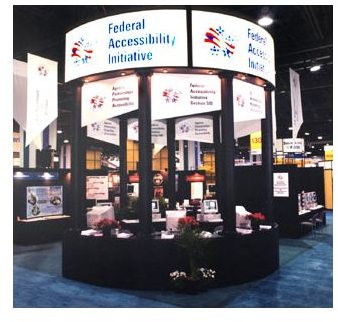How to Make Your Website 508 Compliant
What is 508 compliance?
508 compliance refers to a set of standards used to ensure that electronic and information technologies (EIT) used by the federal government are relatively accessible to people with disabilities. Officially, it is Section 508 of the Rehabilitation Act of 1973 (29 U.S.C. 794d). Congress further strengthened this law in the Workforce Investment Act of 1998.
IT professionals involved in website creation, upgrading, or maintenance for the government must adhere to these to these rules. Knowledge of 508 compliance is also a prerequisite for bidding on web related government contracts. For this reason, some government contractors will not even consider hiring you unless you are able to demonstrate experience or proficiency in this matter. Though the law applies primarily to the federal government, many states also have similar versions.
Websites that are 508 compliant must have practices and code that takes into consideration disparate disabled end users such as those who have visual or audio handicaps, color blindness, epilepsy, or are motion impaired. Some examples are presented below.
Blind/Visually or Hearing Impaired Surfers
Users who are visually impaired may require the use of screen readers in order to surf the web, while users with hearing disabilities will not be able to comprehend various embedded multimedia. To overcome these problems, images are required to have text such as the ALT tag or captions that you provide.
Likewise, if you have audio or video files, you must provide a text caption, description, and/or transcript. Pages that include applets or Flash or Silverlight files must have NOSCRIPT tag options. Notice how carefully NASA’S multimedia website provides text descriptions or captions to fulfill this requirement.
When you use tables to display data, be sure to add the header TH tag and SCOPE attribute so that the screen reader can organize data logically. This detailed Penn State tutorial gives many examples of their usage.
Color Blindness
Users with color blindness may have problems with color contrasts in combinations of red and green or red and black, so do not use these on your webpage. Furthermore, do not rely on the sole use of color in order to present information. This is achieved by making sure that your content may additionally be understood via the use of text.
Users with Epilepsy
To avoid triggering seizures in net users with epilepsy, your web pages should not have flashing or blinking text or any object that flashes with a frequency greater than 2 hz and lower than 55 hz.
Mobility Impairments
Floating menus are difficult to navigate for users with mobility impairments, as well as those with other types of disabilities.The solution: include a text based menu on your webpage.
For All Disabilities: Text Only Alternates
If you create a website that makes it impossible to comply with with these standards, such as the multimedia requirements, then you are required to provide a text-only page as an alternate. This is because modern devices geared towards aiding disabled users are able to interpret text only websites quite easily.
Where to Learn More
The Official Section 508 government website includes information on standards, training, tools and resources, and a FAQ.
Penn State University has a handy checklist which includes links to detailed explanations as well as do’s and don’ts.
The United States Access Board, a government agency that promotes accessible design, has an explanation on why certain restrictions are used, and also has numerous code samples.
When you feel you are ready, test your newfound knowledge by analyzing government websites such as the White House, which uses text captions, the NOSCRIPT tag, and descriptive link labelling. For a comprehensive list of government websites, visit USA.gov.
Resources
- W3C’s Web Accessibility Initiative; it includes a list of validators
- TechRepublic’s article on managing 508 testing
- Department of Health and Human Services (HHS) course on testing documents for 508 compliance
_Image credit: The Federal Accessibility Initiative booth at FOSE by section508.go_v
